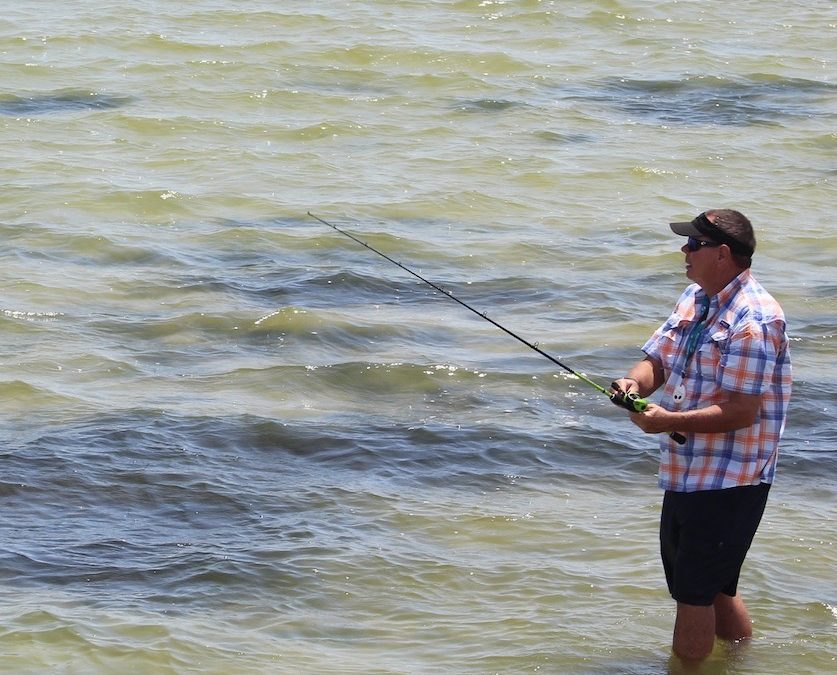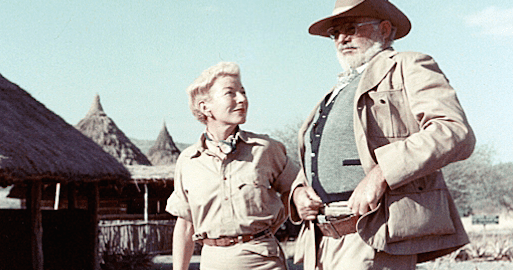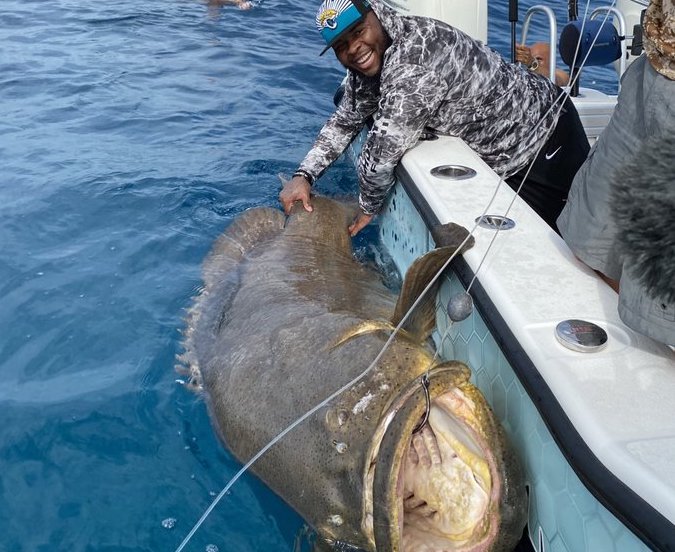Last May, while visiting friends in Edgewater, Florida, I enjoyed a boat ride out to Mosquito Lagoon. My best old buddy in the world, Jim Carver, and his cousins Greg, Fred and Jennifer, all siblings, boarded Greg’s 22-foot Nauticstar at the Anglers’ Yacht Club in New Smyrna. We cruised down the back channel of the Indian River for an hour before reaching the lagoon. Ultimately, we wound up at JB’s Fish Camp for lunch.
Like my previous visit ten years back, it was a sunny, breezy Florida kind of day. Since that time, I had heard disturbing reports about the once pristine waterway on the central east coast of Florida. The Indian River Lagoon (IRL) is the largest such waterway in the country, serving as the eastern edge of the fast growing stretch of property between Volusia and Palm Beach Counties. Mosquito Lagoon, the Banana River and the Indian River make up the estuary.
Considered one of the most diverse waterways in North American, the IRL watershed is home to over 2,100 different species of plants and more than 2,200 animal species.
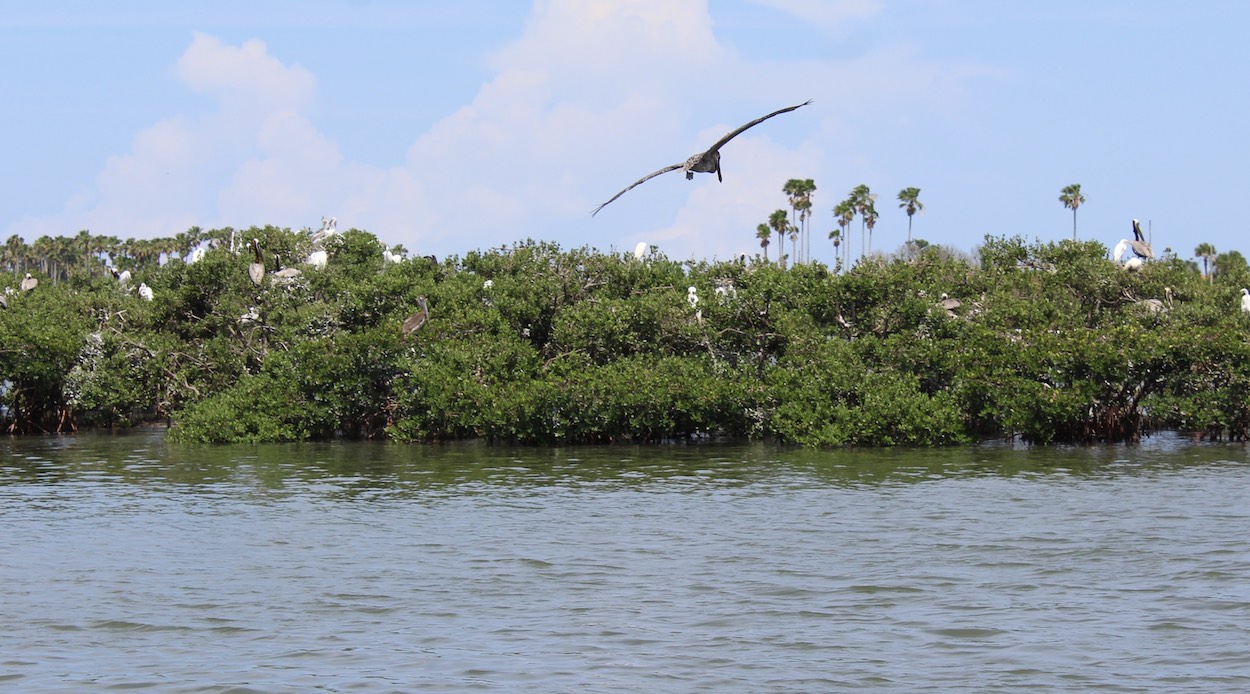
Pelicans roosting on mangroves near the Anglers Club at Indian River.
For decades, human development has increased the amount of freshwater draining into the IRL. Some of this is contaminant laden. Development has resulted in the loss of 85 percent of the mangroves – those unique trees that hug the shorelines and provide habitat for vast numbers of marine life. Other saltmarsh vegetation and seagrass meadows have also been devastated. This in turn has caused the reduction of wildlife including manatees, seabirds and sport fish such as redfish, spotted seatrout and snook.
“The Indian River Lagoon has always been one of my favorite places to fish,” Greg, owner of Gulf Atlantic Vehicles, said over lunch at JBs Fish Camp. “Whether it’s in a 22-footer, a boat with a trolling motor or kayaking down the narrow intertwining canals.
“When I was younger, we actually did a lot of surfing not far from the lagoon just over the sea oats in El Dora to the beautiful Atlantic Ocean. So pristine back in the late 1960s and 70s when there weren’t many people around New Smyrna Beach.”
He went on to say that in the present day there is more awareness about the lagoon due to the problems the algae blooms and warm freshwater caused.
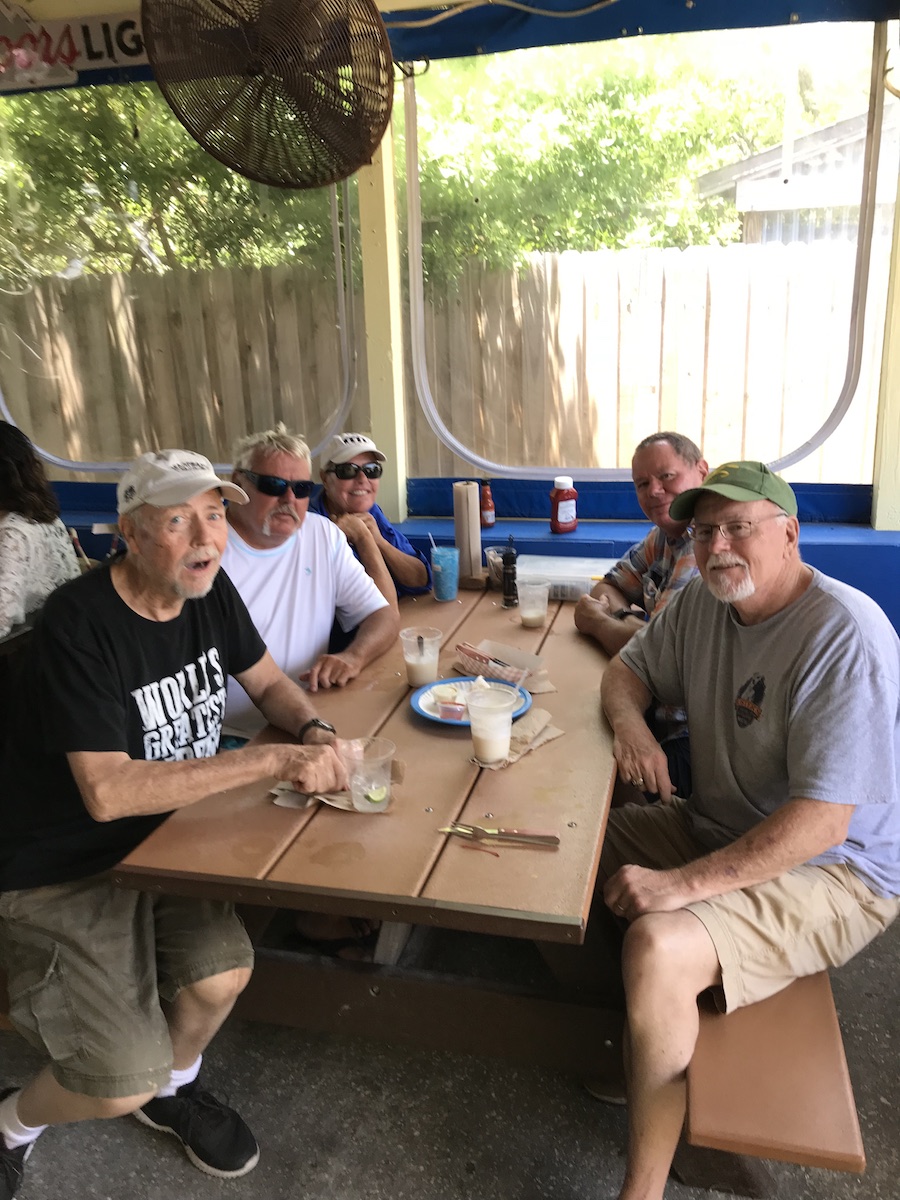
The crew (left to right) Jim, Fred, Jennifer, Greg and myself at JB’s Fish Camp.
“There have been many studies lately with different opinions as to the causes and how to fix the problem,” Greg went on. “Some of the probable causes are leakage from septic tanks from neighboring homes and also from fertilizer and pesticides. Overdevelopment is also a contributing factor.
“The effects of these are felt not only by the fish and mangroves, but manatees and also the oysters. Our club has an oyster lease west of JB’s Fish Camp and for a couple of years we were unable to harvest from it. It has gotten better recently though.
“I feel that it’s a good idea to have discussions about it with the input of science and conservation, then develop a plan and implement it as soon as possible.”
It was too late to fish when we reached a sand bar where Greg liked to cast. He said fishing was better in early morning before the sun warmed the shallows and scattered the reds and trout, but he assured me the fishing was decent if you know where to go.
The IRL is an example of what can happen to such delicate waters so close to a growing human population. It should serve as a “canary in the cave” for other lagoons, rivers and bays on every coast.
If you’re interested in the IRL, take a look at this in-depth report from The Daytona Beach News-Journal.

